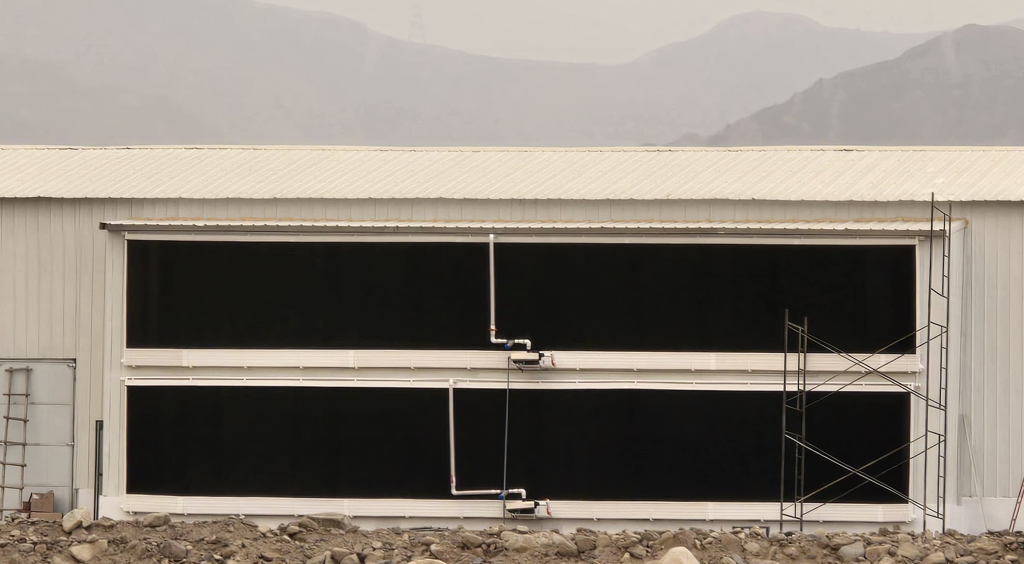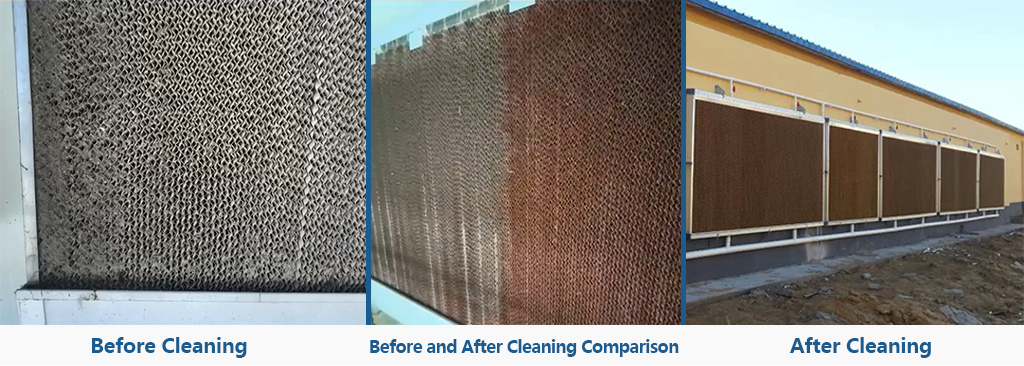Industry news
Poultry House Cooling System: Comprehensive Maintenance Guide
Added:2025-06-17
Cooling pads (commonly referred to as wet curtains) are a cornerstone of the poultry house cooling system, especially for ensuring optimal temperature and humidity levels to support healthy bird growth. Proper evaporative cooling pads maintenance is essential for system efficiency, cost savings, and bird welfare. This guide explores the importance of maintaining cooling pads, key precautions, and a step-by-step cleaning process, ensuring your poultry farm remains productive and sustainable.
Why Maintaining Poultry House Cooling Pads Matters?
1. Enhanced Cooling Efficiency
Regular wet curtain cleaning ensures effective heat dissipation, maintaining a stable poultry house temperature. This is critical for reducing heat stress in poultry and promoting bird health.
2. Longevity of Equipment
Routine maintenance prevents early wear and tear, reducing the need for frequent replacements and minimizing operational disruptions.
3. Improved Air Quality
Clean cooling pads facilitate better airflow, helping to maintain superior ventilation system optimization for poultry farms.
4. Economic Benefits
Efficient cooling systems consume less energy, lower water usage, and lead to cost savings over time.
Key Maintenance Precautions for Evaporative Cooling Pads
1. Regular Cleaning Schedule
▪ Clean poultry house cooling pads at least weekly to remove dust, feathers, and algae.
▪ Use soft-bristle brushes to avoid damaging the pad material. Avoid abrasive cleaners.
2. Monitor Water Quality
▪ Use filtered or treated water to minimize mineral deposits and scaling.
▪ Maintain water pH between 6 and 8 to prevent chemical damage.
3. Inspect for Mold or Bacteria Growth
▪ Check for discoloration, odors, or visible mold on the pads. Immediate action prevents contamination that could harm the flock.
▪ Ensure adequate drainage around the pads to avoid water pooling.
4. Check for Damage
▪ Inspect for tears, sagging, or uneven water flow. Promptly replace or repair any damaged sections.
5. Ensure Proper Airflow
▪ Test the ventilation system and confirm fans are operating at full capacity.
How to Clean Poultry House Cooling Pads?
1. Initial Inspection
▪ Turn off the cooling system and inspect the pads for blockages or mineral deposits.
▪ Verify even water distribution across the pad surface.
2. Gentle Cleaning
▪ Use a soft-bristle brush to remove loose debris from the pads.
▪ Rinse pads thoroughly with a low-pressure hose, moving from top to bottom to avoid spreading dirt.
3. Deep Cleaning for Scale Removal
▪ Apply a vinegar-water solution (1:3 ratio) to stubborn deposits. Let it sit for 15 minutes, then rinse thoroughly.
▪ Avoid industrial chemicals that may damage the pads unless approved by the manufacturer.
4. System Inspection
▪ Check water pumps and pipes for blockages, leaks, or uneven flow.
▪ Ensure fans are operating effectively to maintain optimal airflow.
5. Record Maintenance Activities
▪ Maintain a log of cleaning, inspections, and repairs to track performance trends.
Additional Cleaning Solutions
We also provide select biotechnological cleaning agents to assist with cooling pad maintenance. These solutions are highly effective, eco-friendly, and ideal for removing tough deposits while preserving pad integrity.
Addressing Common Issues
▪ Uneven Water Distribution: Check and clean the water distribution system to ensure consistent flow.
▪ Reduced Cooling Efficiency: Inspect for blockages or scaling that may obstruct airflow or water movement.
▪ Foul Odors or Mold Growth: Implement regular cleaning routines and improve drainage to prevent contamination.
Conclusion
Maintaining your poultry house cooling system is essential for efficient operation and the health of your flock. By following these best practices for evaporative cooling pads maintenance, you can optimize ventilation, reduce heat stress in poultry, and save on operational costs. Implement a regular maintenance schedule today to ensure your poultry farm remains productive and sustainable.



